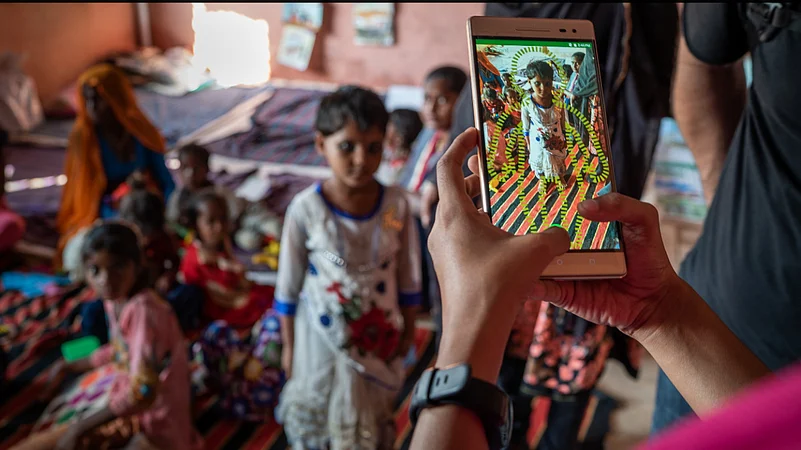While India has shown recent improvements in areas like life expectancy, literacy rate and health conditions, malnutrition still persists in the country due to widespread poverty, rapid population growth, and weak last mile governance.
That’s the reason Welthungerhilfe, one of the largest private aid organizations in Germany, with support from Action Against Hunger, a global humanitarian organization that seeks to address the causes and effects of hunger and save the lives of malnourished children, decided to pilot the Child Growth Monitor app in India. The app was piloted in Maharashtra, Madhya Pradesh, and Rajasthan because undernutrition is particularly prevalent in the states and a large number of children are affected by severe wasting conditions like marasmus.
In rural India, Anganwadi workers are tasked at assessing the nutritional status of children aged between 6 months and 5 years—about 40 to 60 kids within each of their intervention areas. However, most of these workers are ill-equipped or unskilled, leading to flawed data. Data management is also a cause of concern because the measurements are manually written on paper, saved in logbooks, and then transferred to spreadsheets. This is a time-consuming process that’s also prone to human errors, resulting in lack of timely insights to help these children.
One of the biggest problems in tackling malnutrition is that it’s difficult to tell by conventional means or the naked eye whether a child suffers from malnutrition. Also, due to flawed data, aid workers are not able to reach out to children who urgently require assistance.
The Child Growth Monitor project was devised to address this problem. The cloud-based, smartphone application is powered by Microsoft Azure and AI services and detects malnutrition and enables health workers identify and provide care to children struggling from chronic undernourishment. The app uses the infrared sensor available in smartphones and directly captures 3D measurements of a child’s height, body volume and weight ratio, and then loads the data onto the cloud. The information is then evaluated by nutritionists and IT specialists to analyze the child’s dietary health further helping the field workers to work out nutrition plans for the children. The project also reduces the treatment time which is crucial to reduce mortality due to wasting.

Source: Microsoft
When the app was piloted in 2018, Jochen Moninger, Innovation Director at Welthungerhilfe, was hopeful for the Child Growth Monitor app to emerge as a recognized, global solution among humanitarian organizations globally. According to Jochen, “Today, more than 800 million people around the world suffer from hunger. But you can’t solve hunger if you don’t know where the hungry people are.”
Beyond the humanitarian disaster, hunger tends to devastate economies in nations where it takes root. In fact, use of the solution in India alone could free up hundreds of millions of dollars for reinvestment into the lives of children.
While the non-profit had aimed to release the final Child Growth Monitor app globally in 2021, the 2020 pandemic forced them to release the beta version of the app immediately since the need to identify food insecurity and malnutrition became even more important in wake of the global health and economic crisis.
(The author is a Technology Journalist and Podcaster. Views expressed are personal, and do not necessarily reflect those of Outlook Magazine)
















